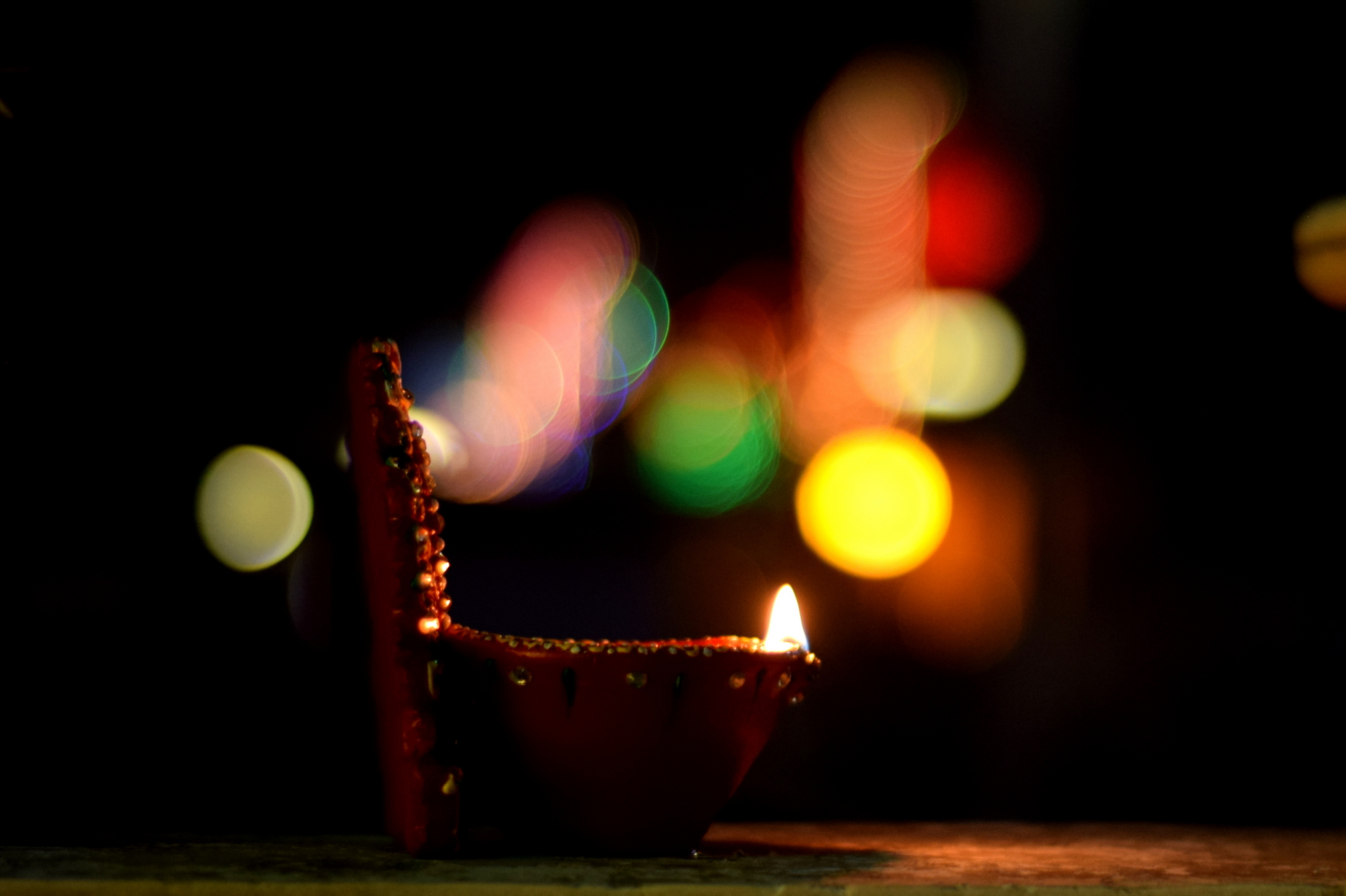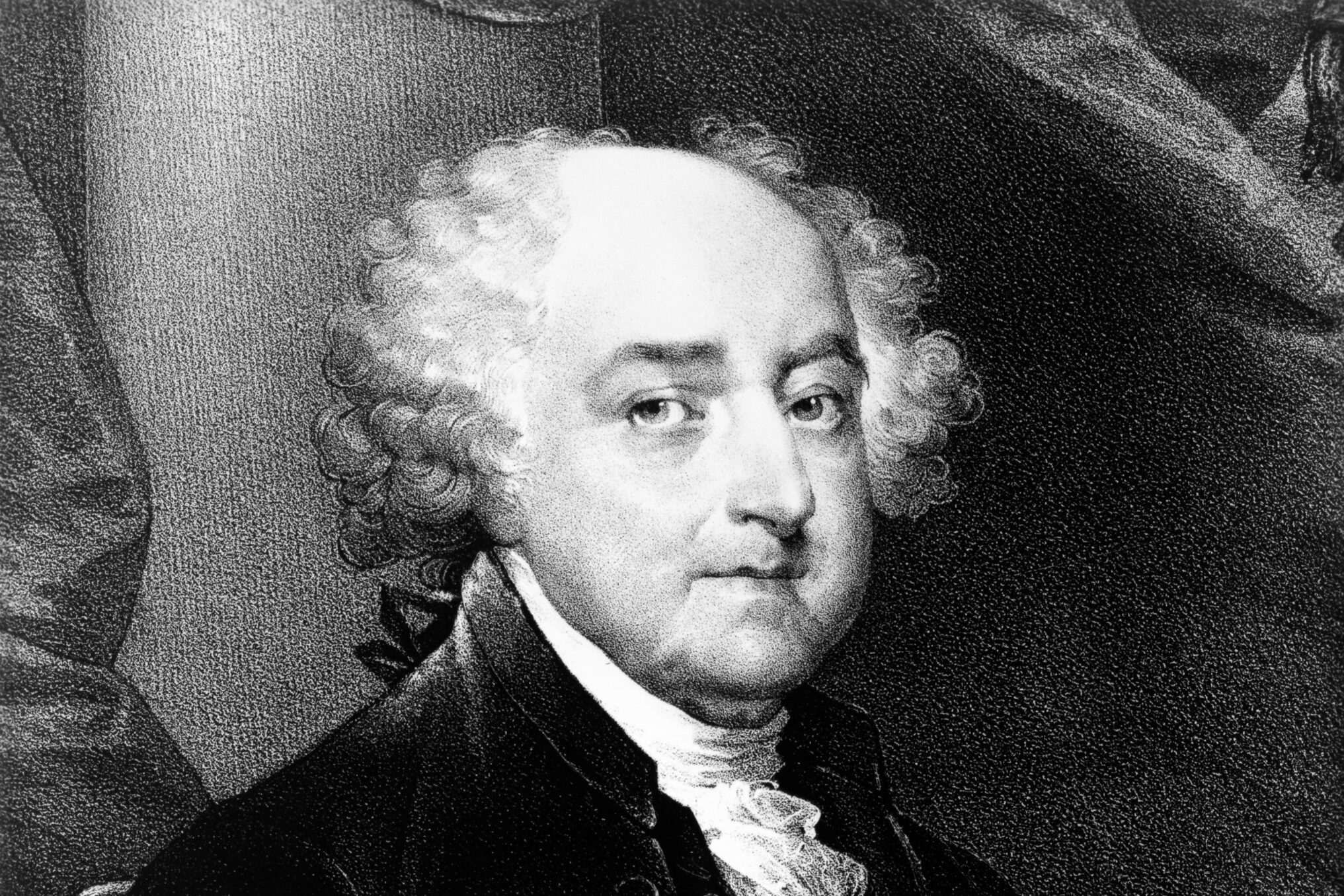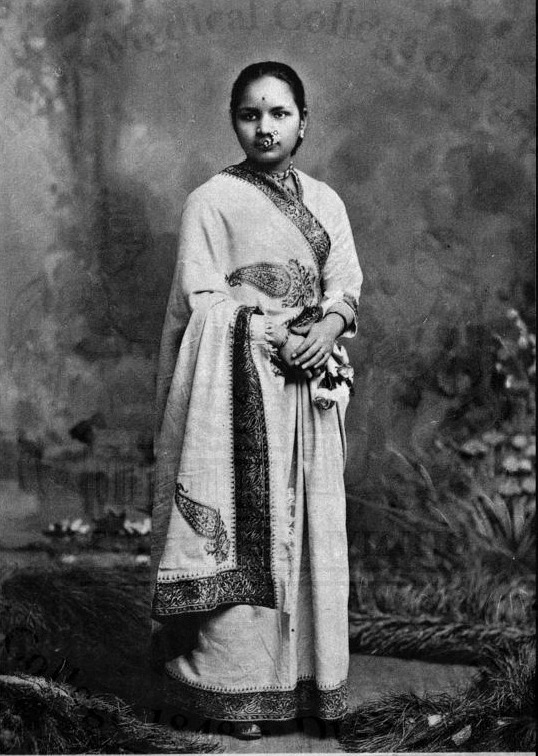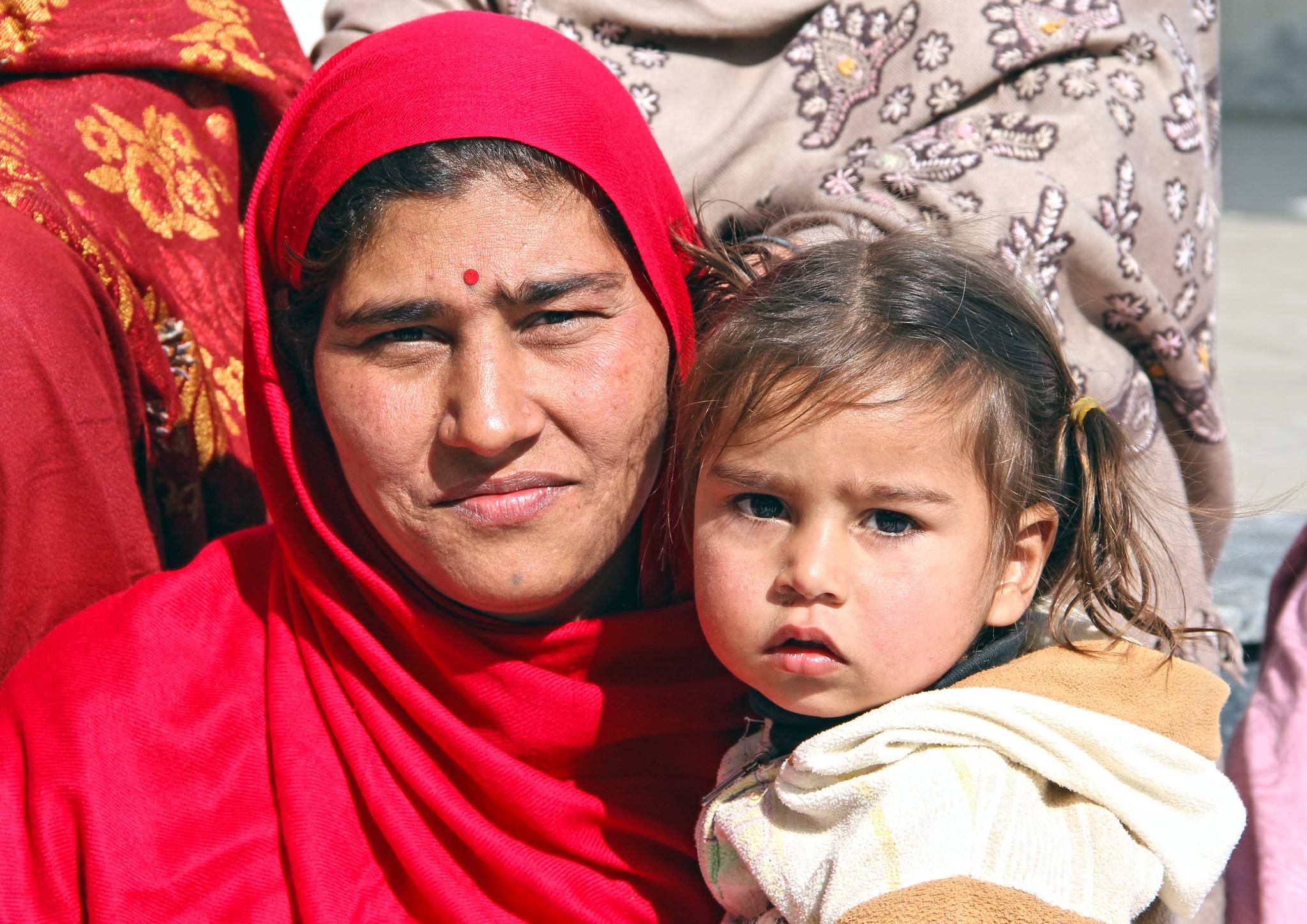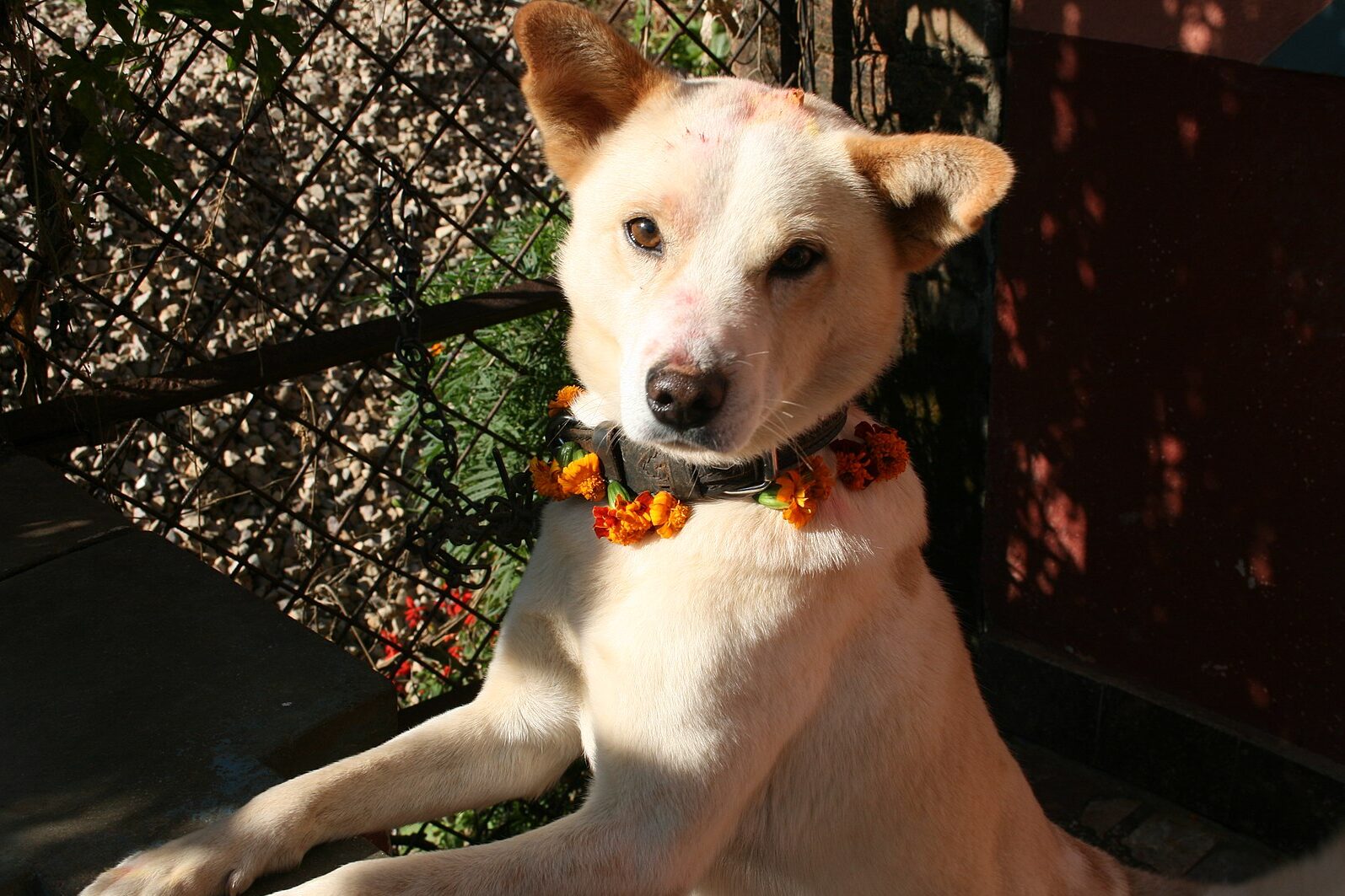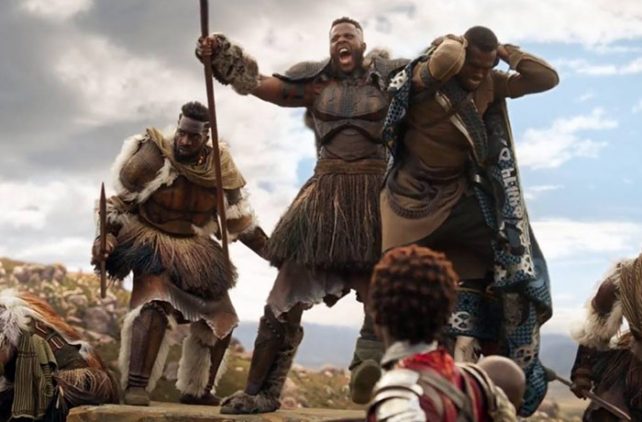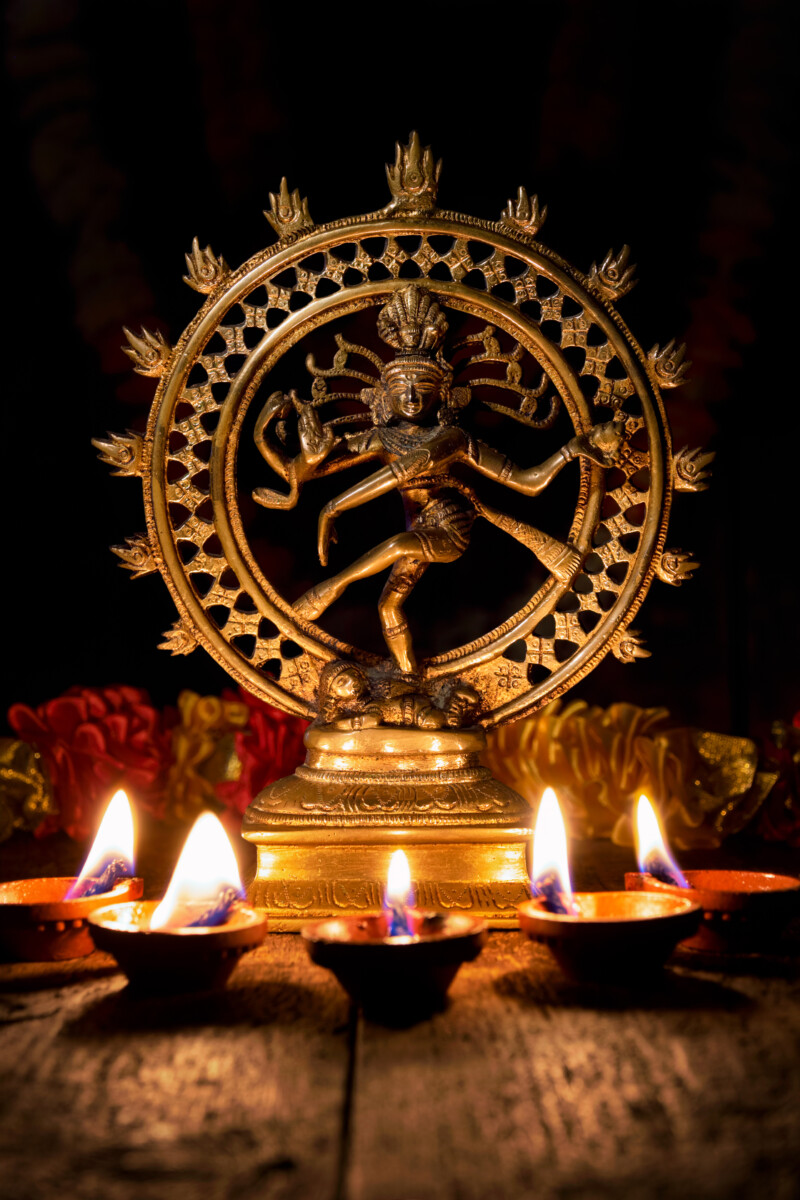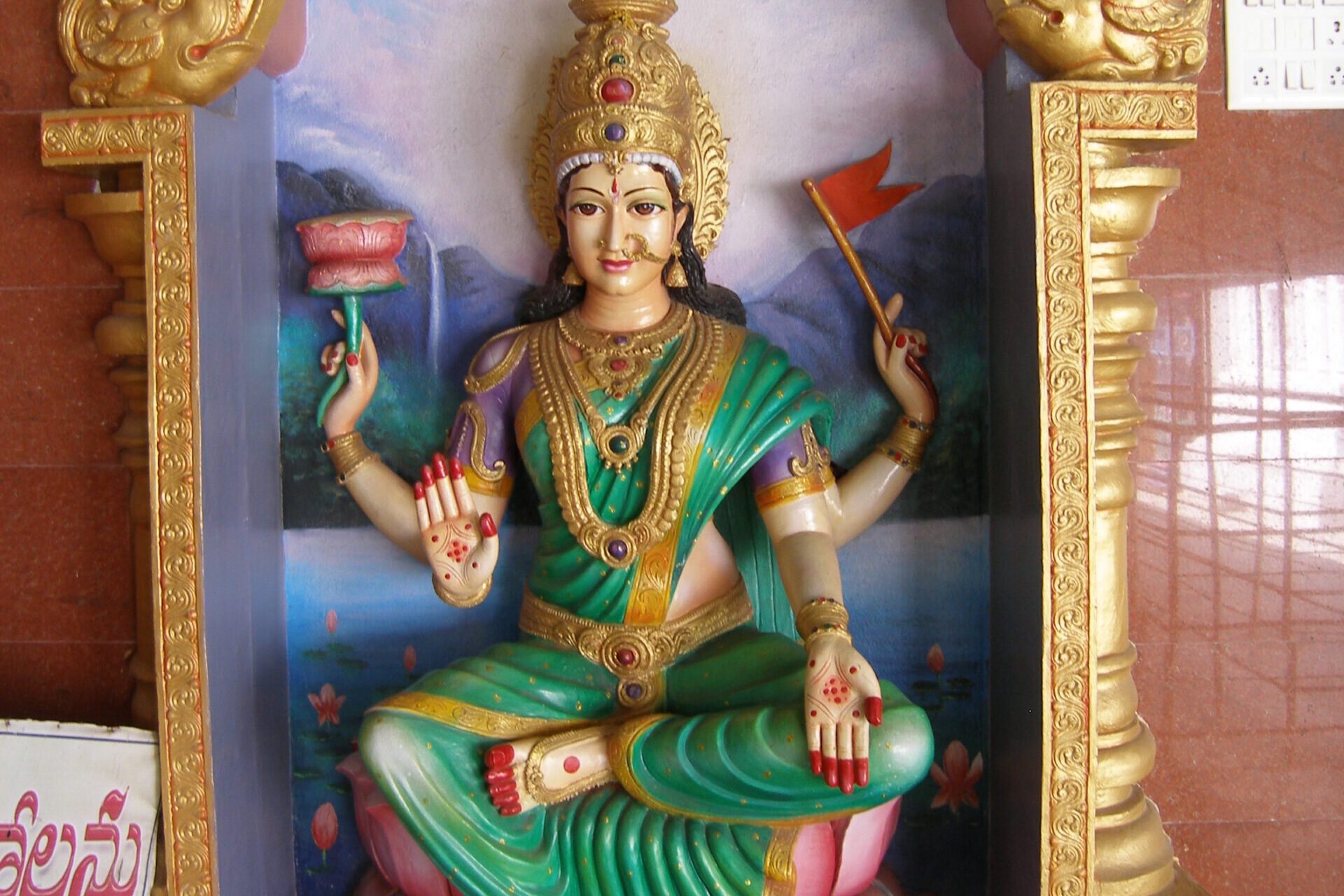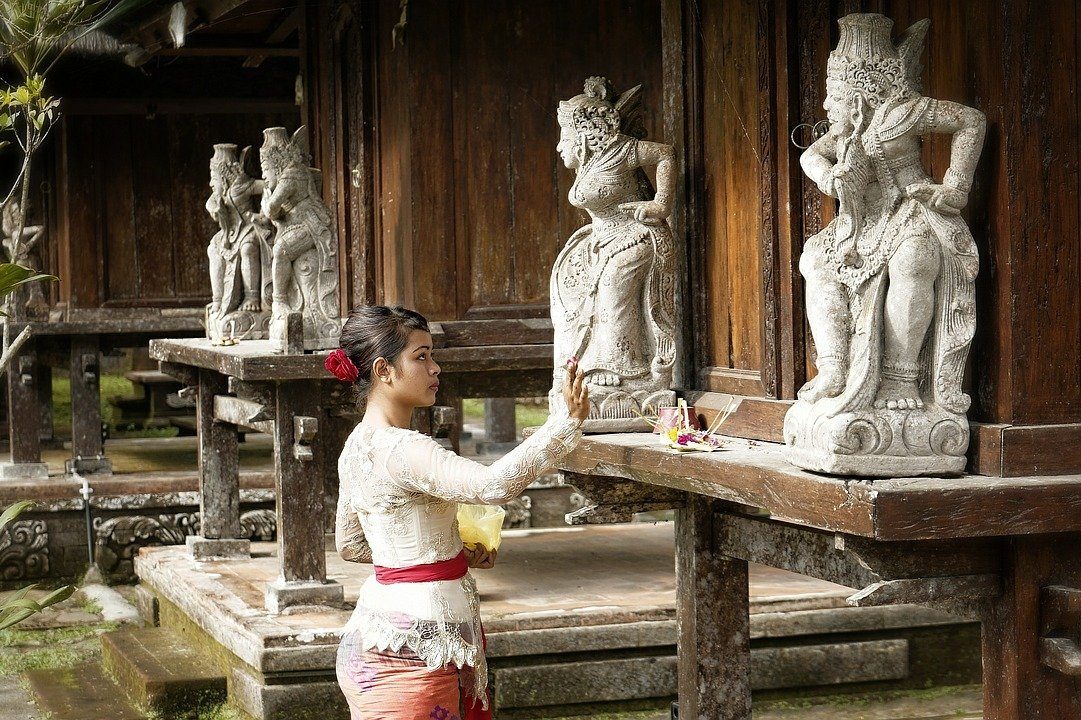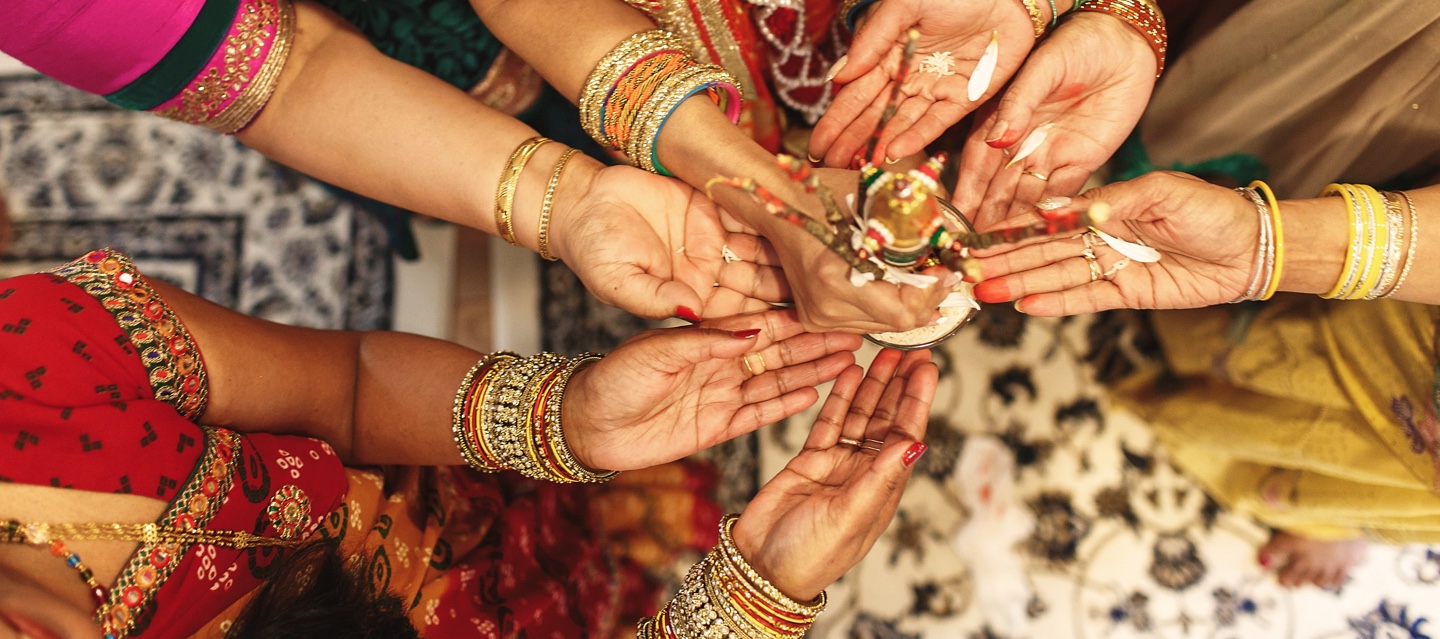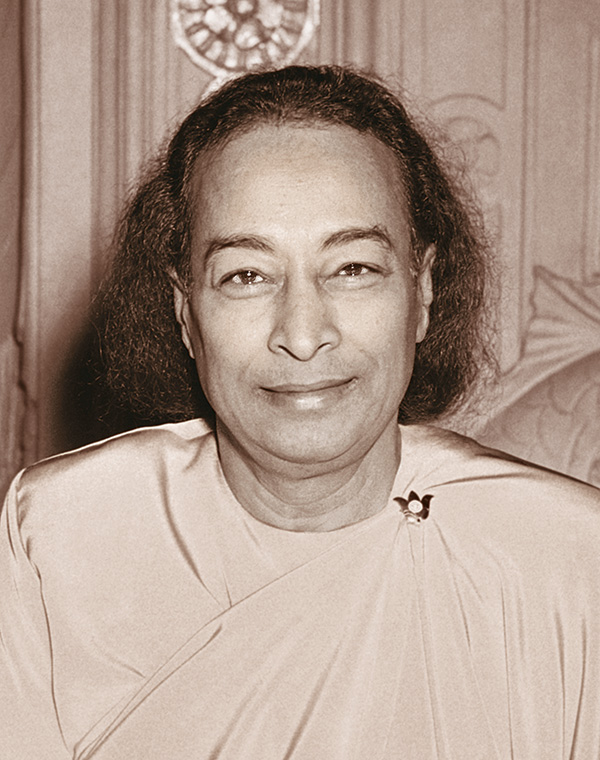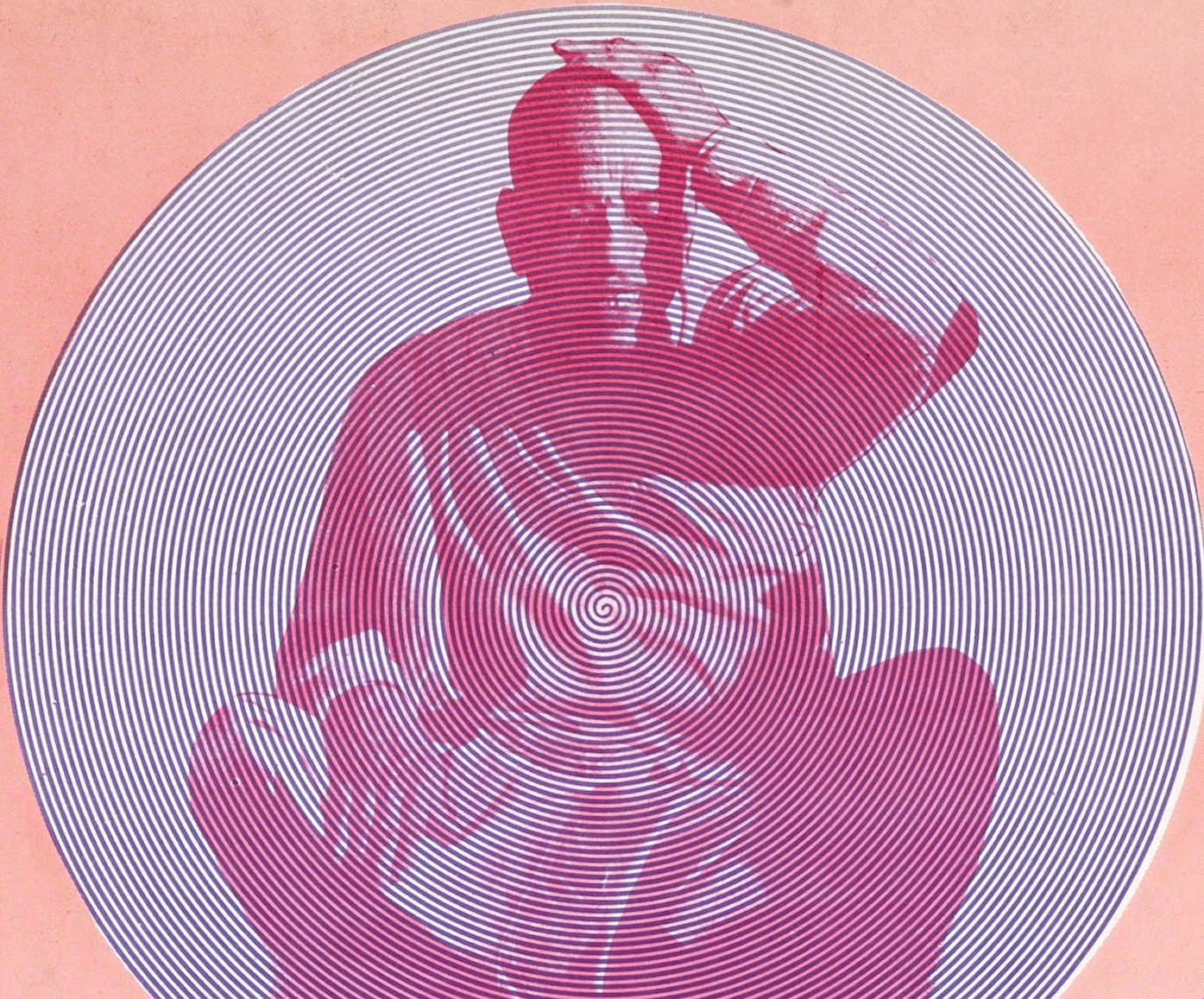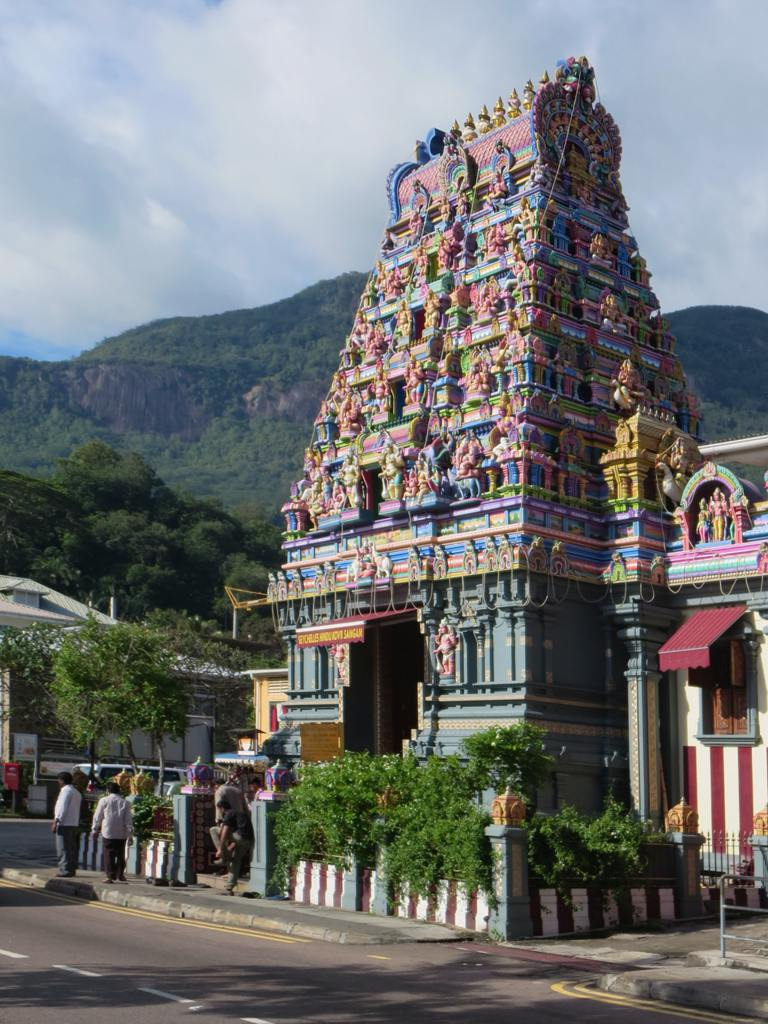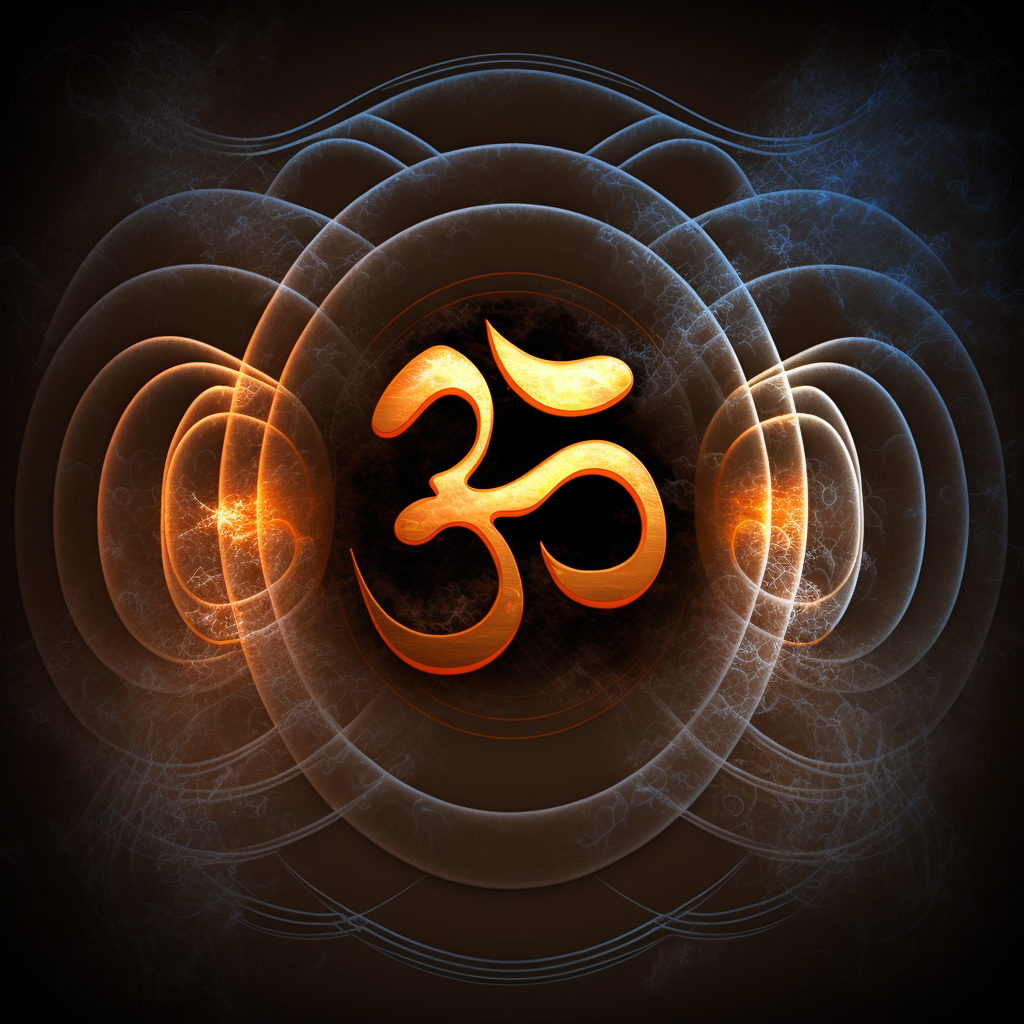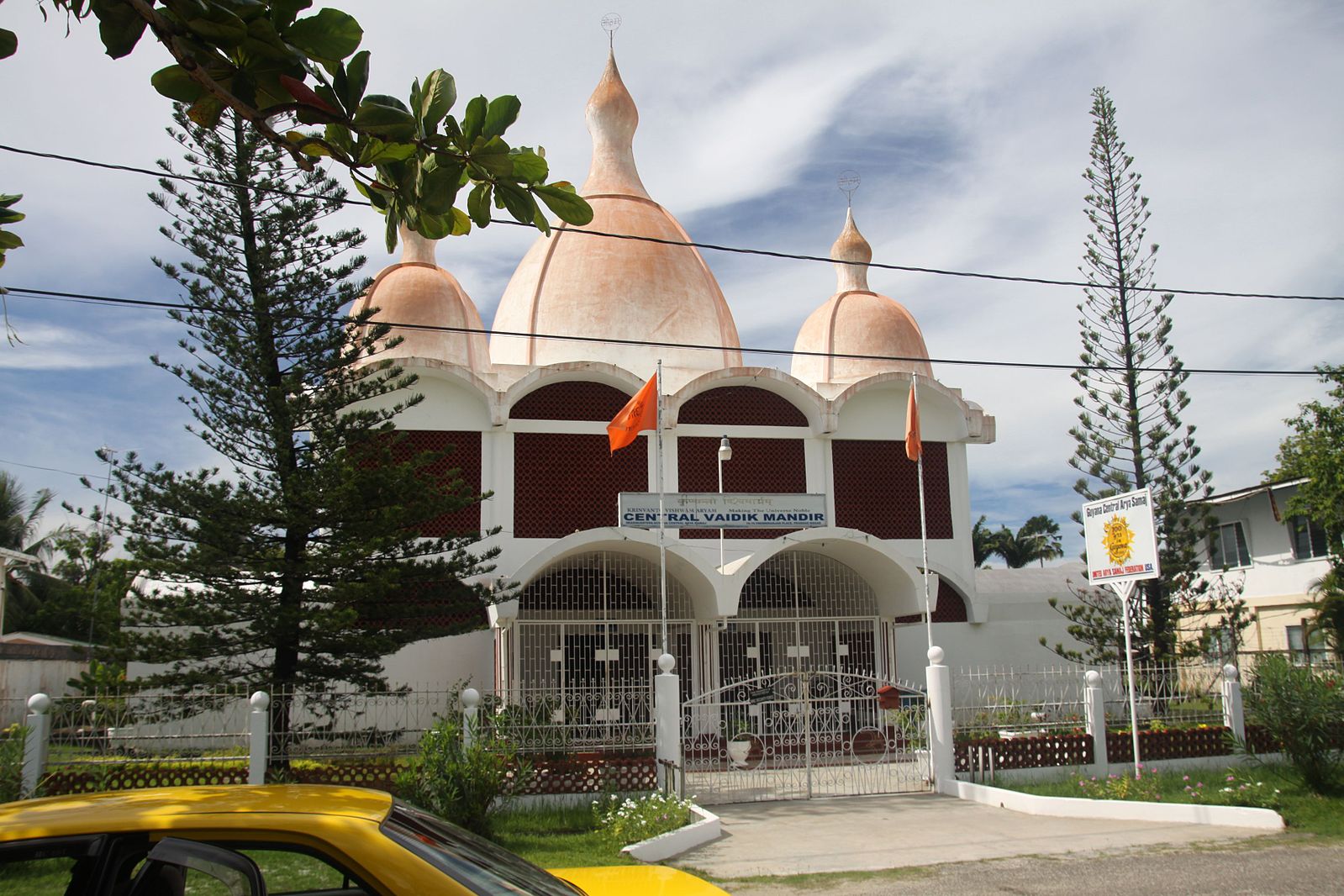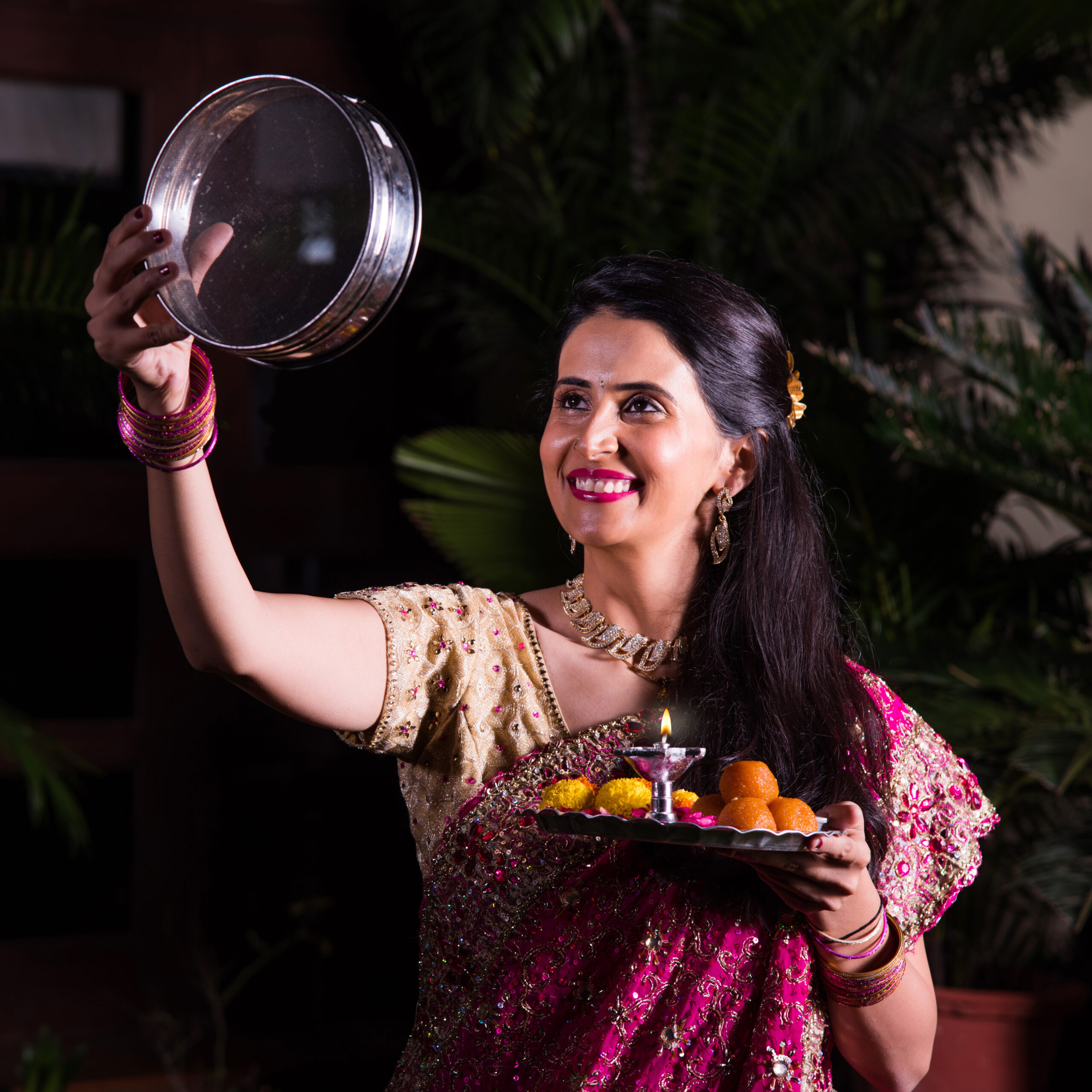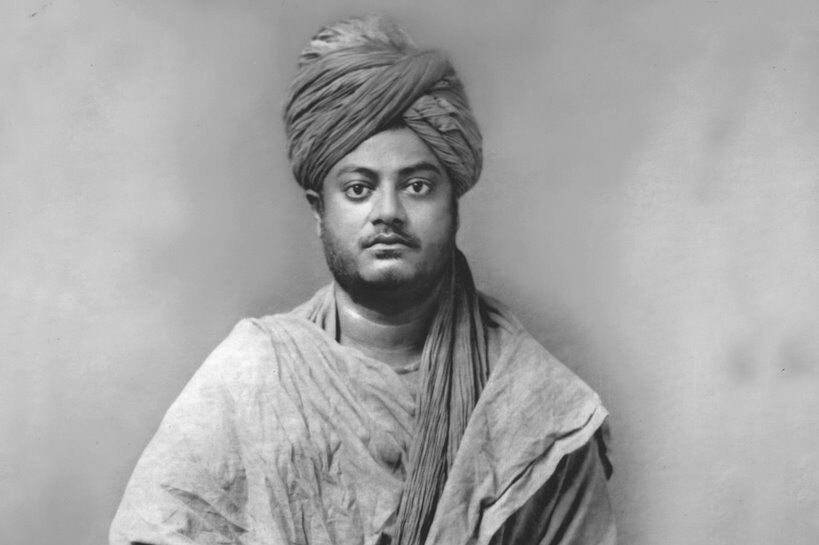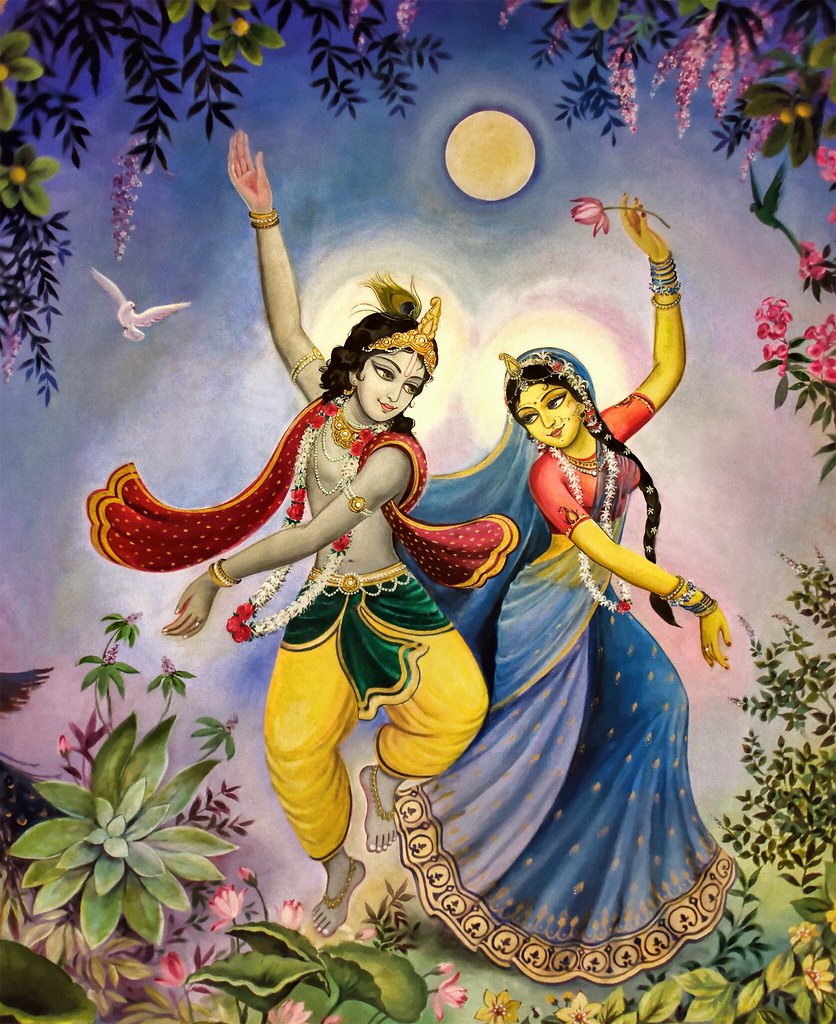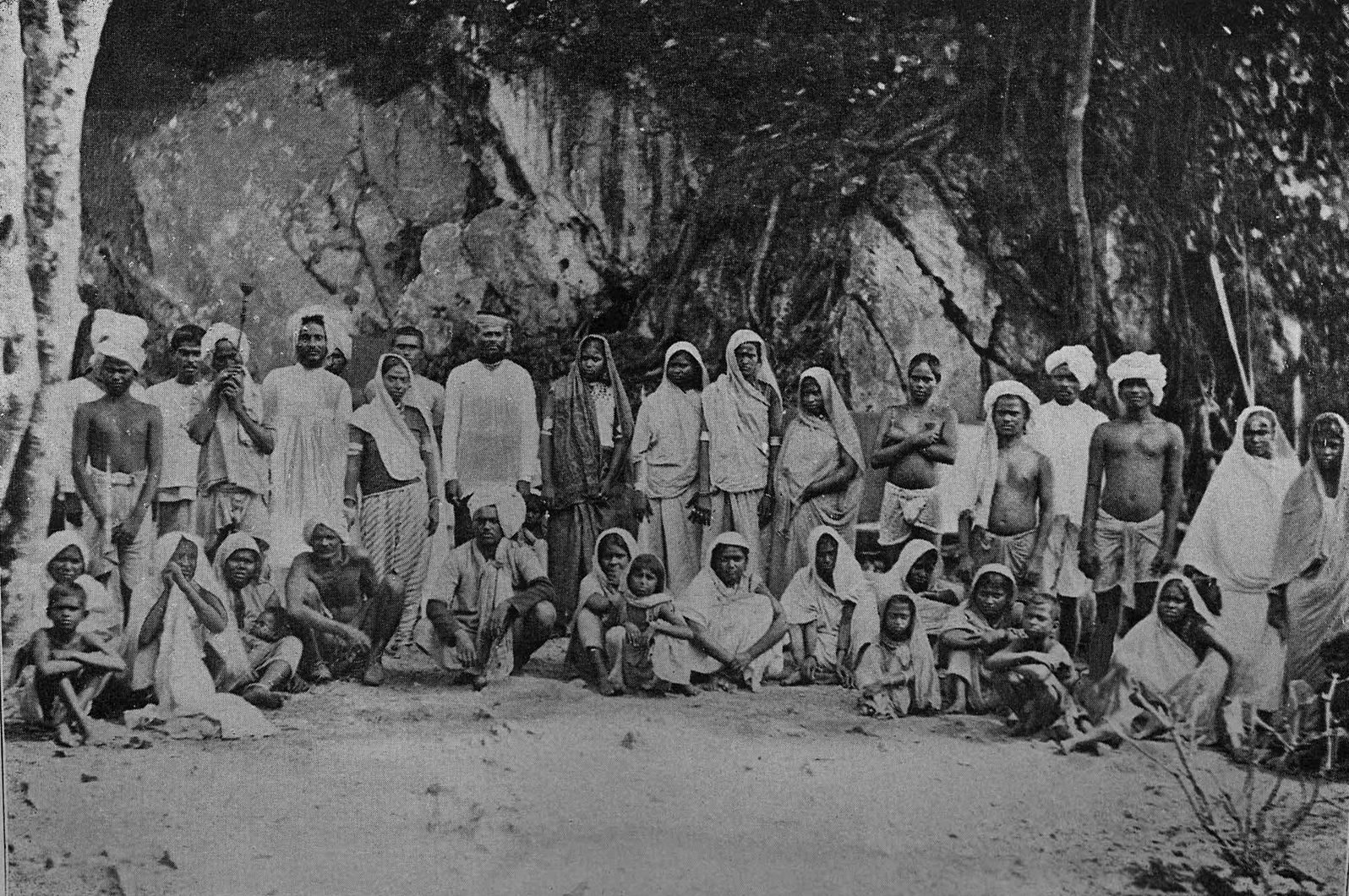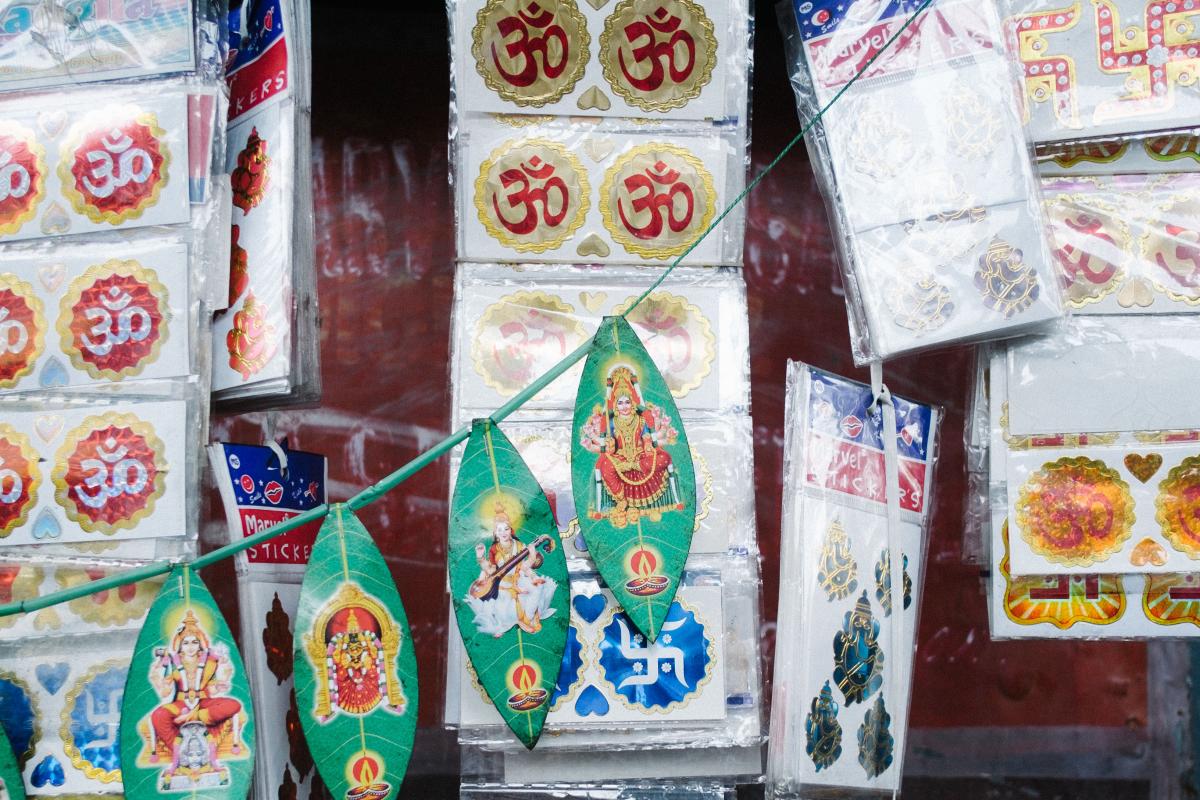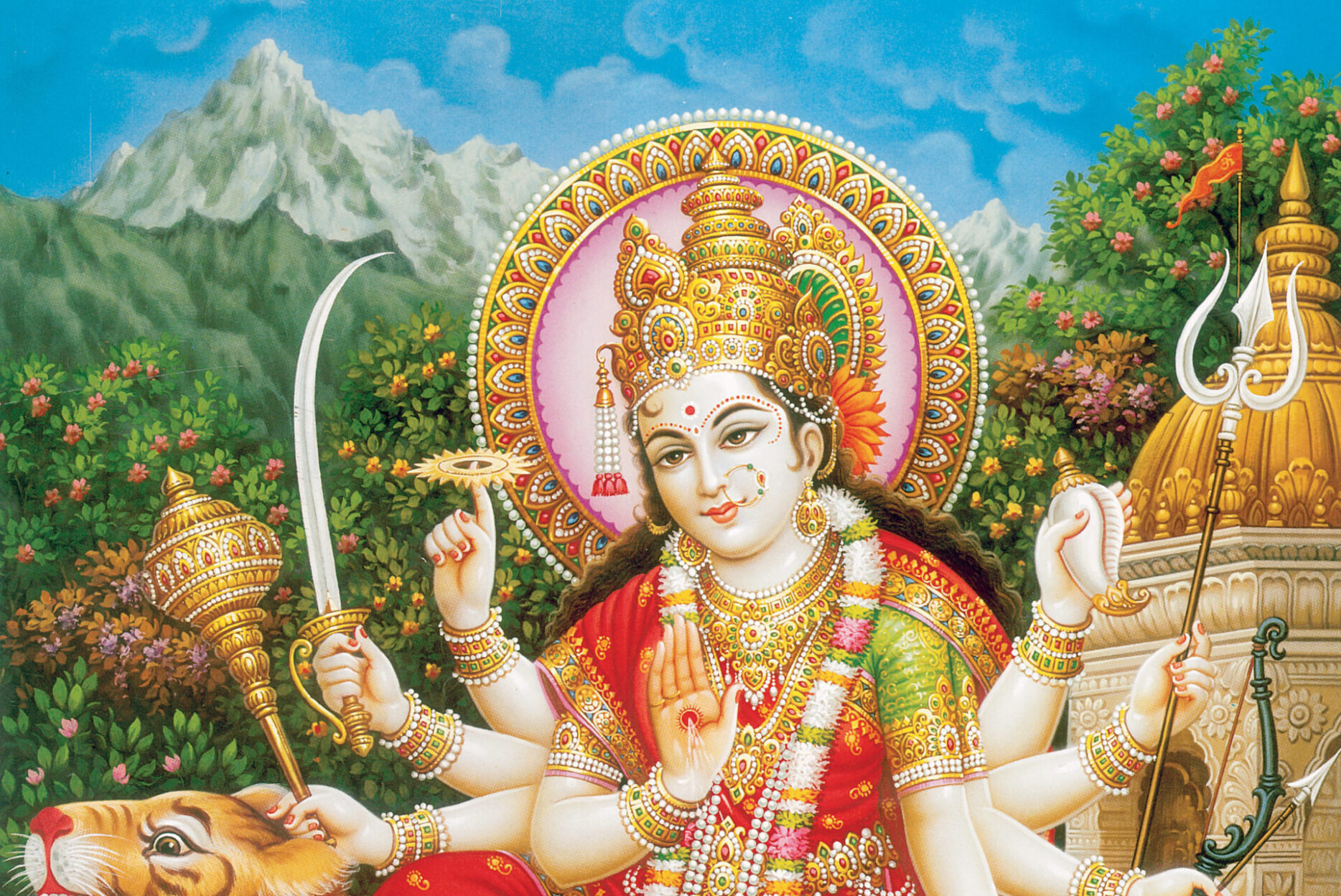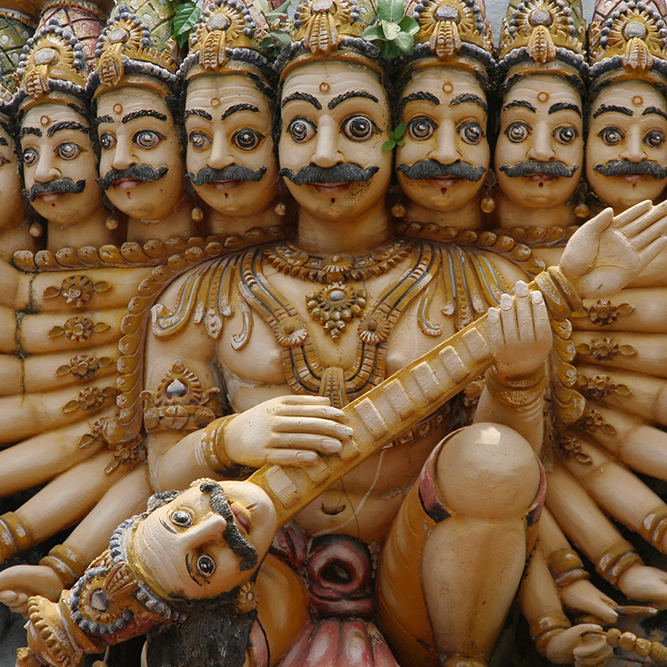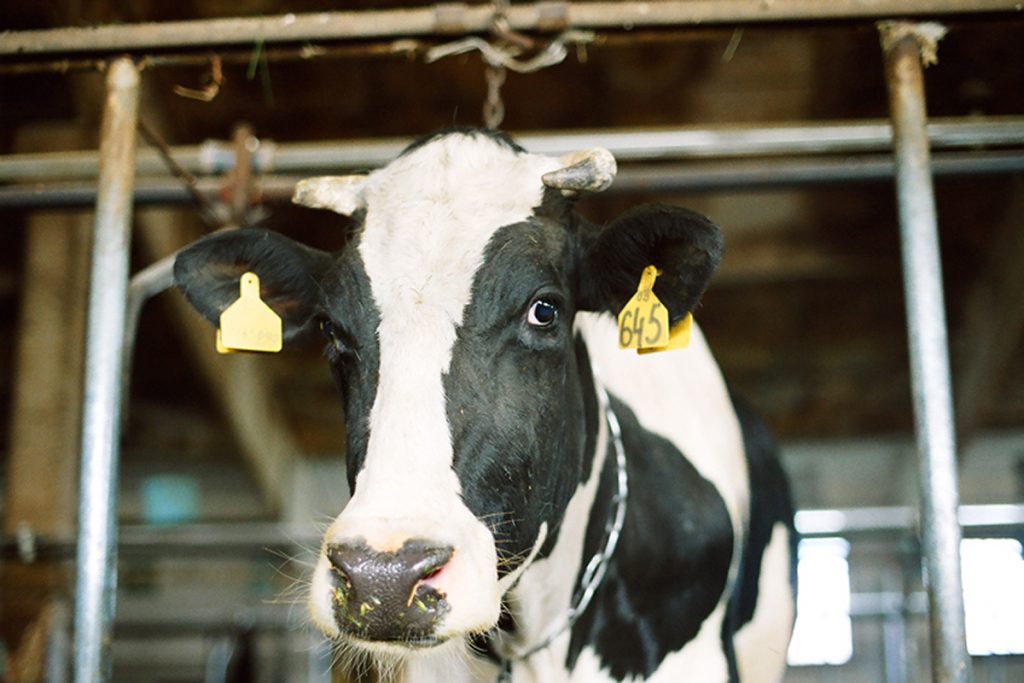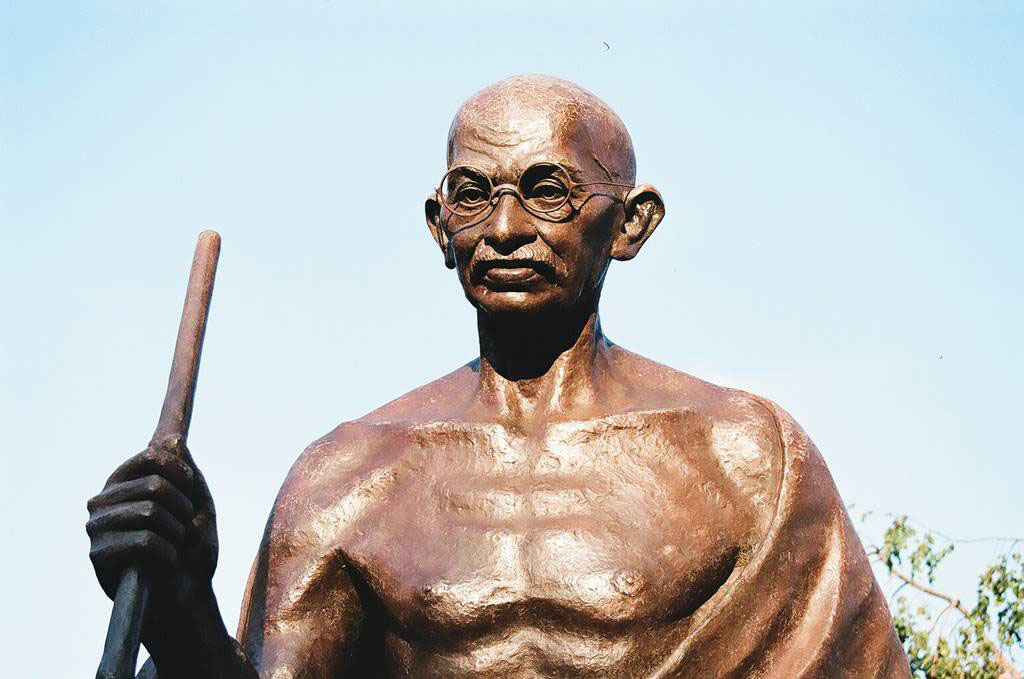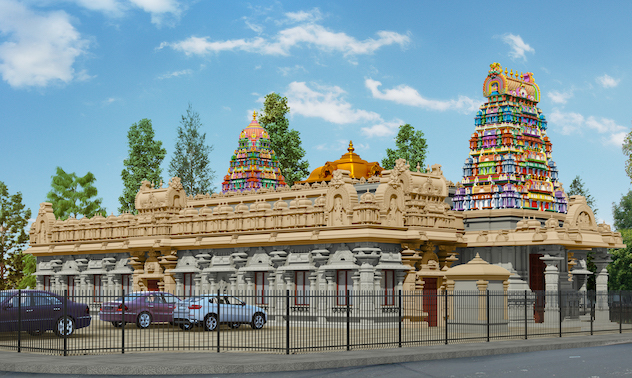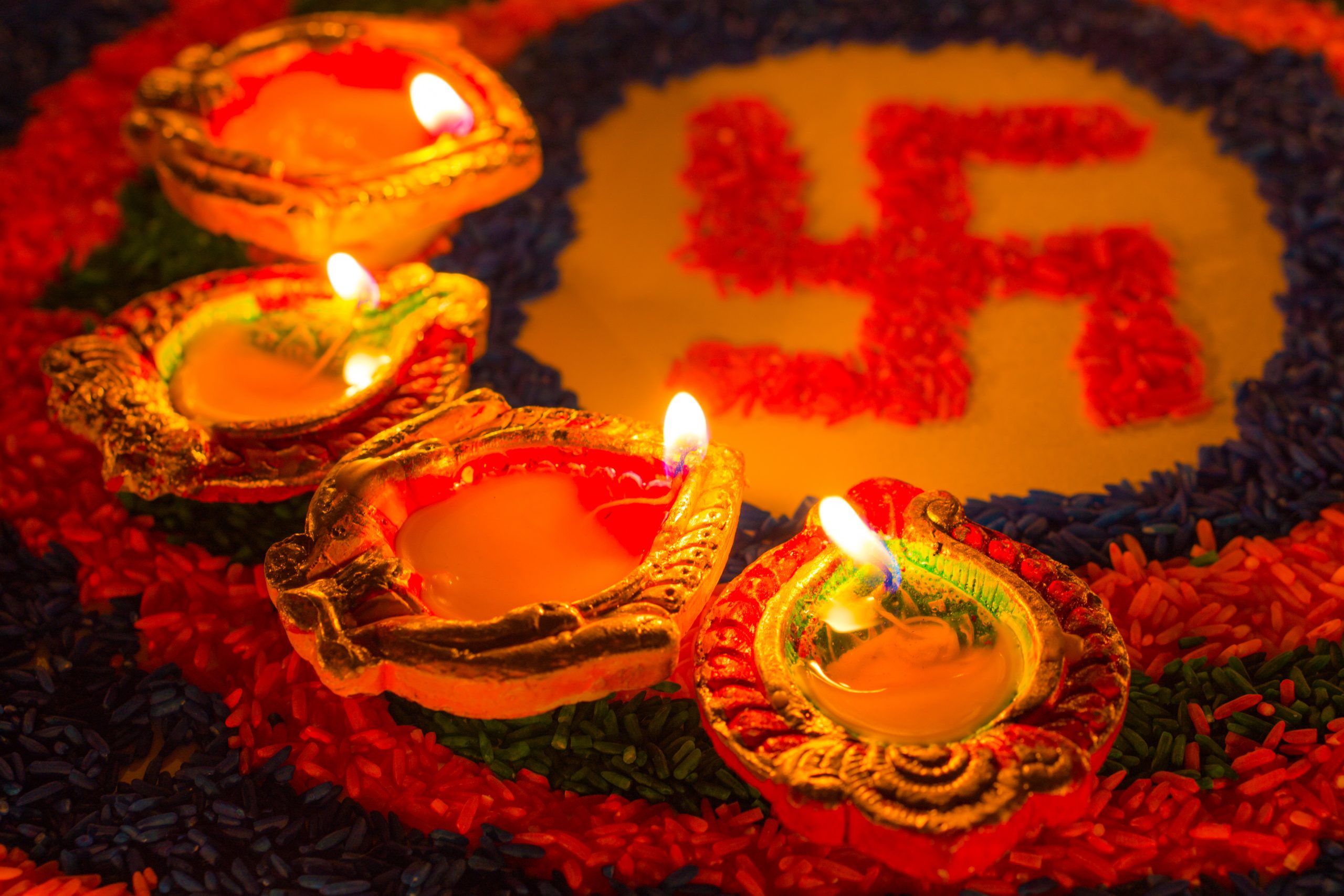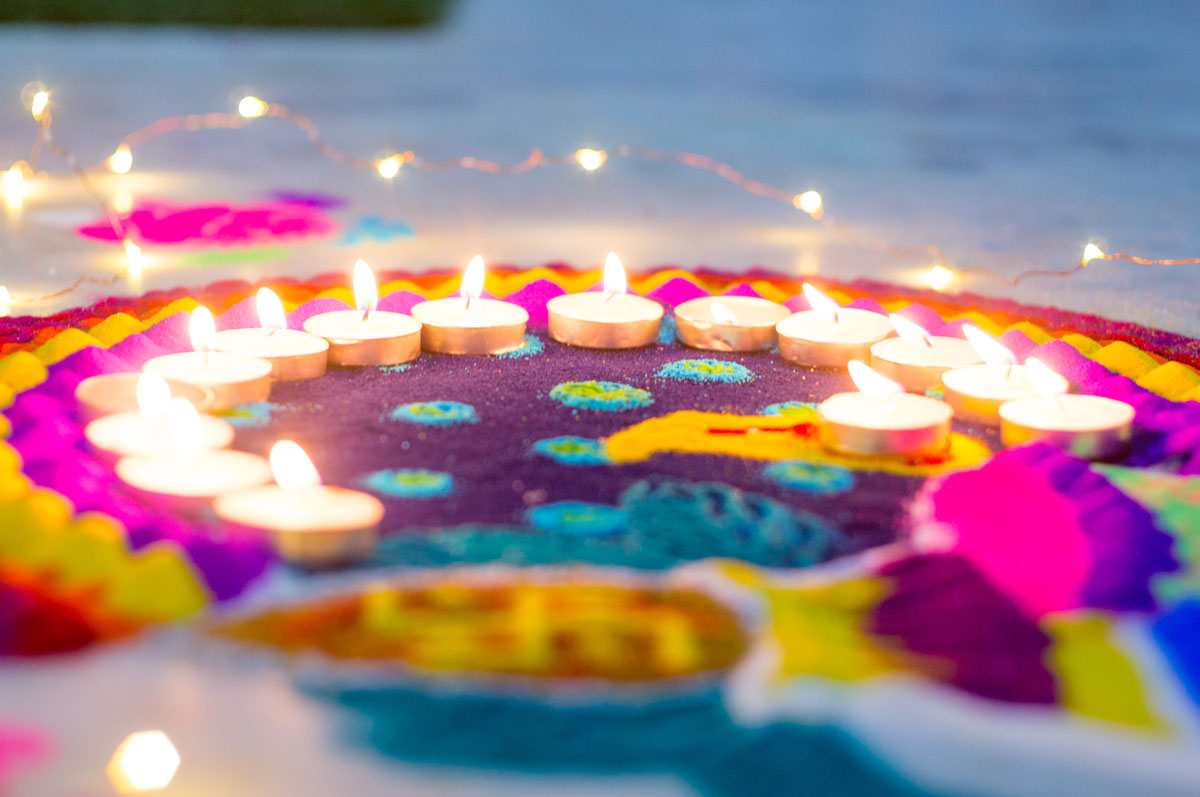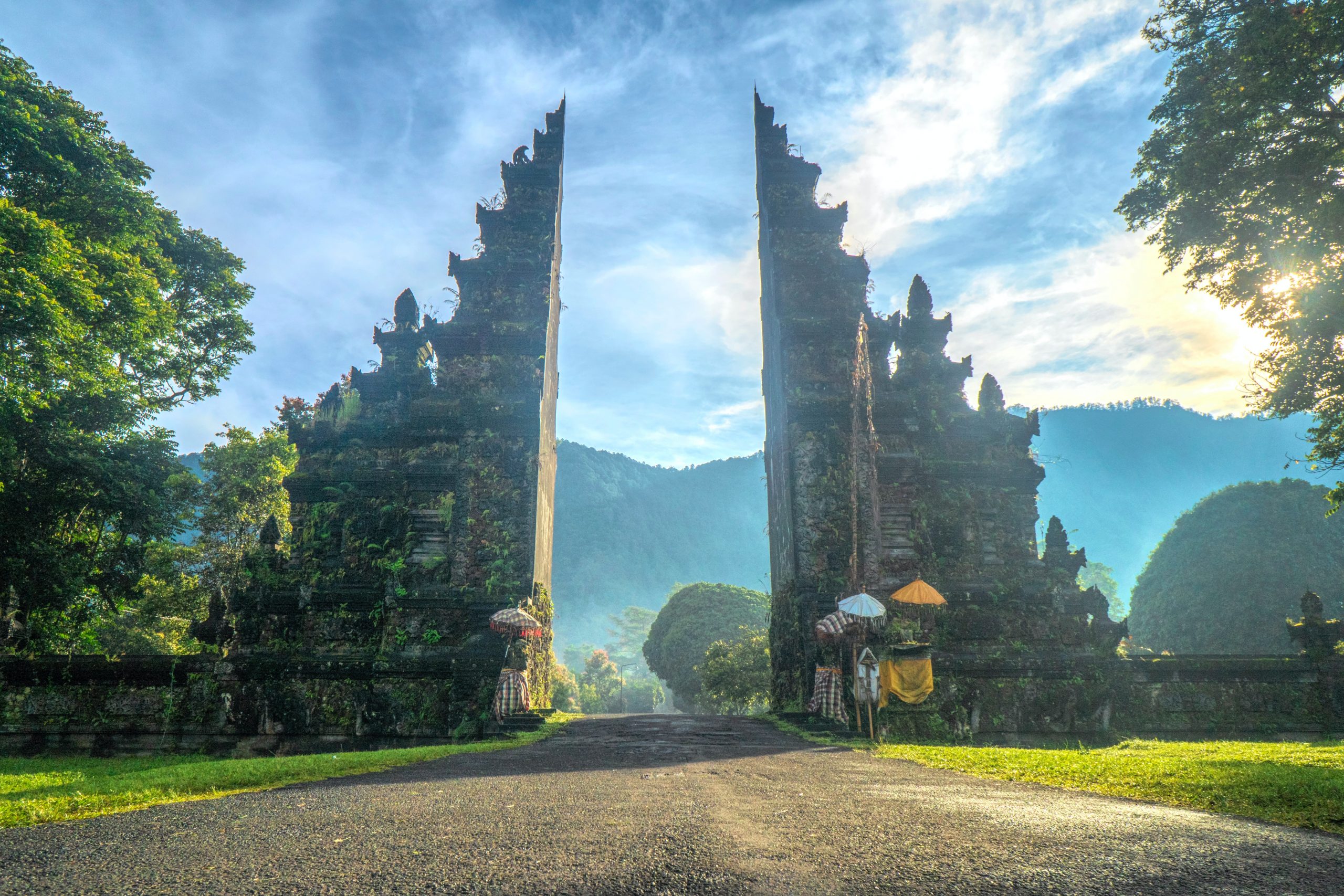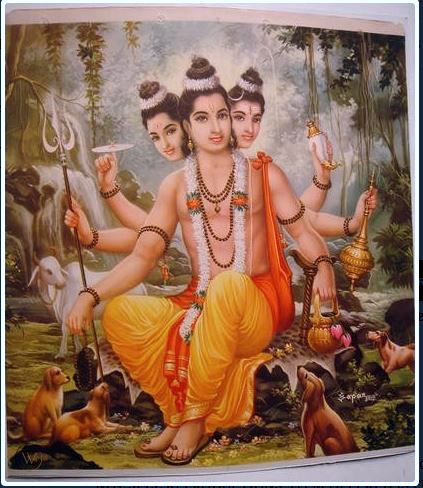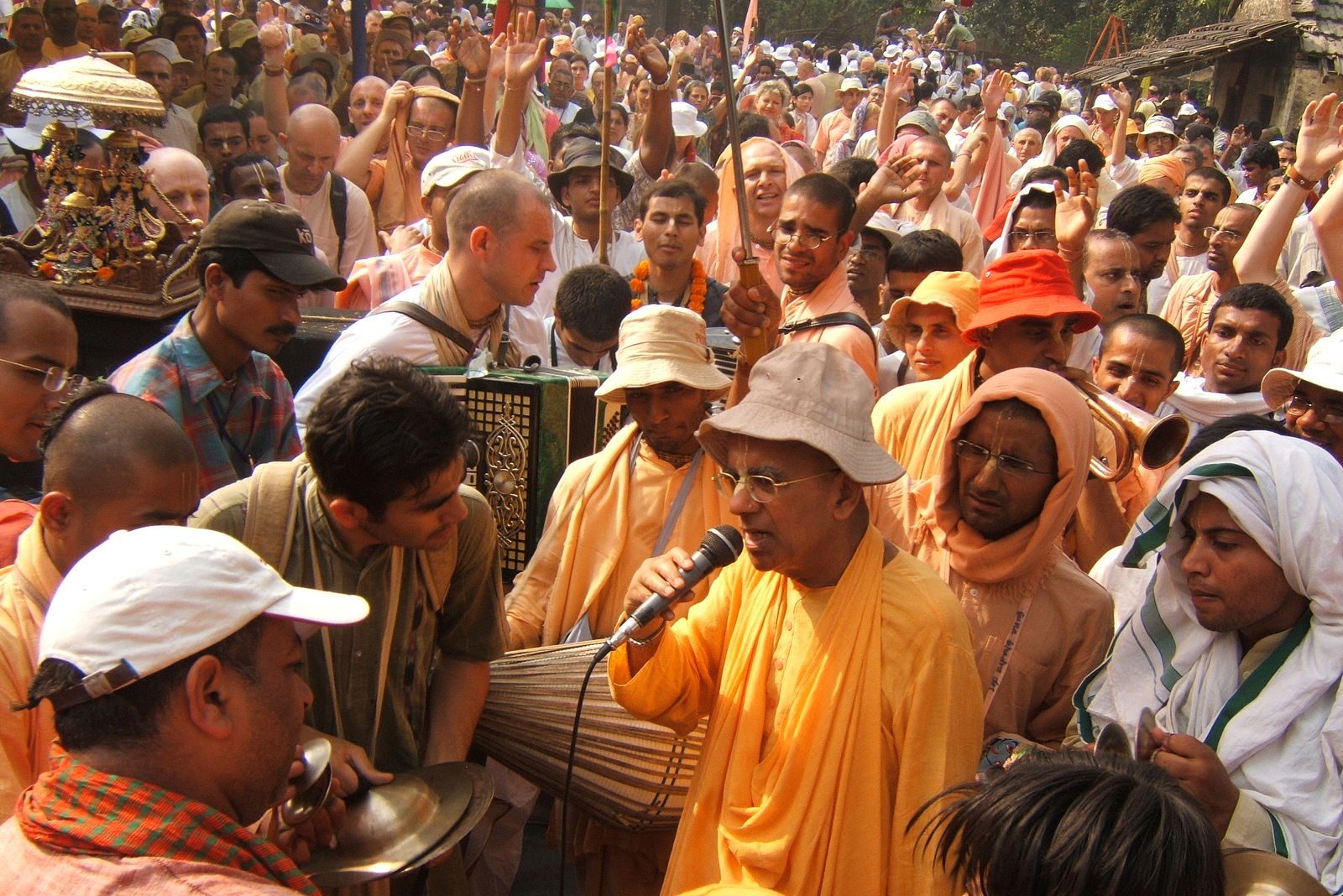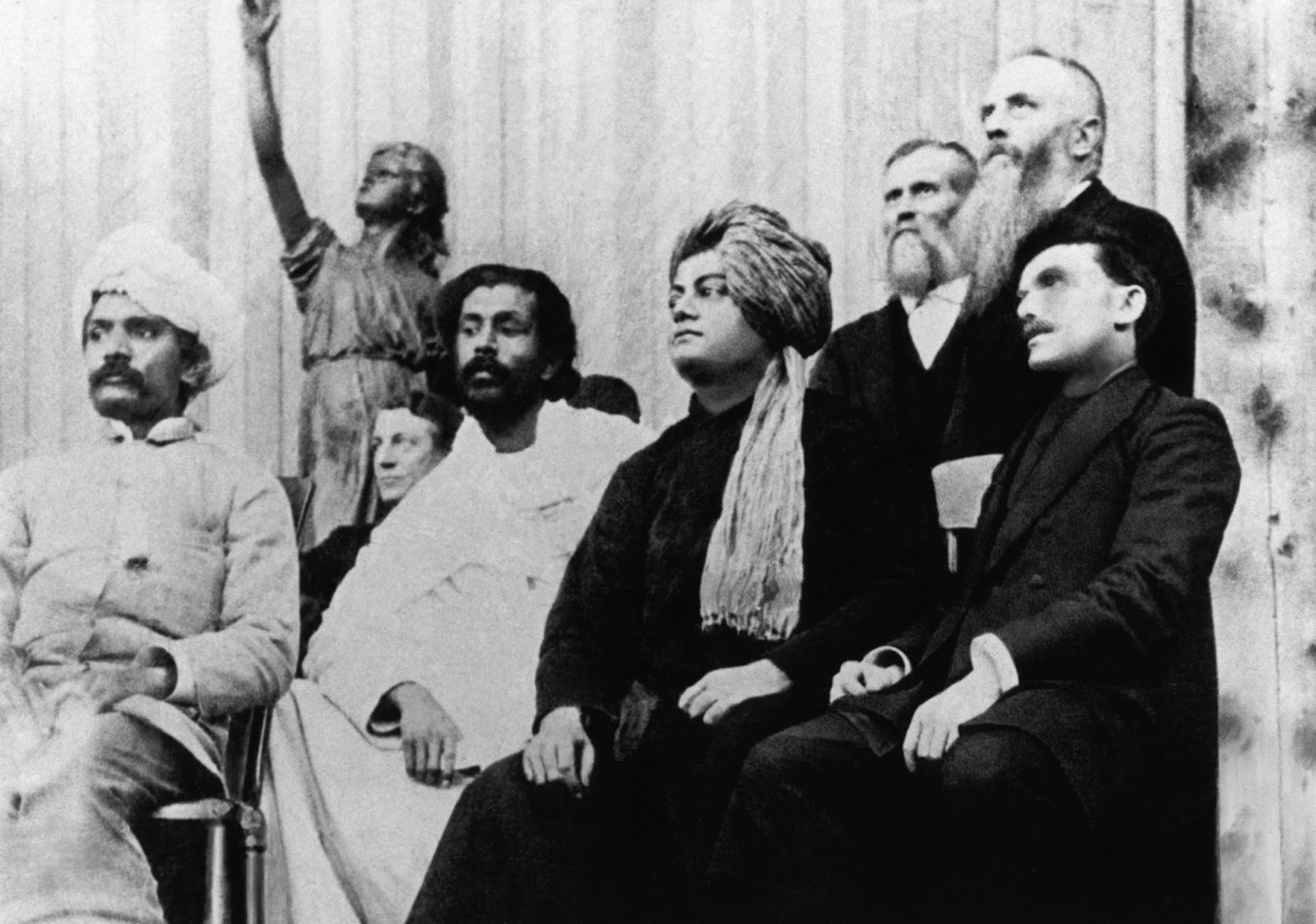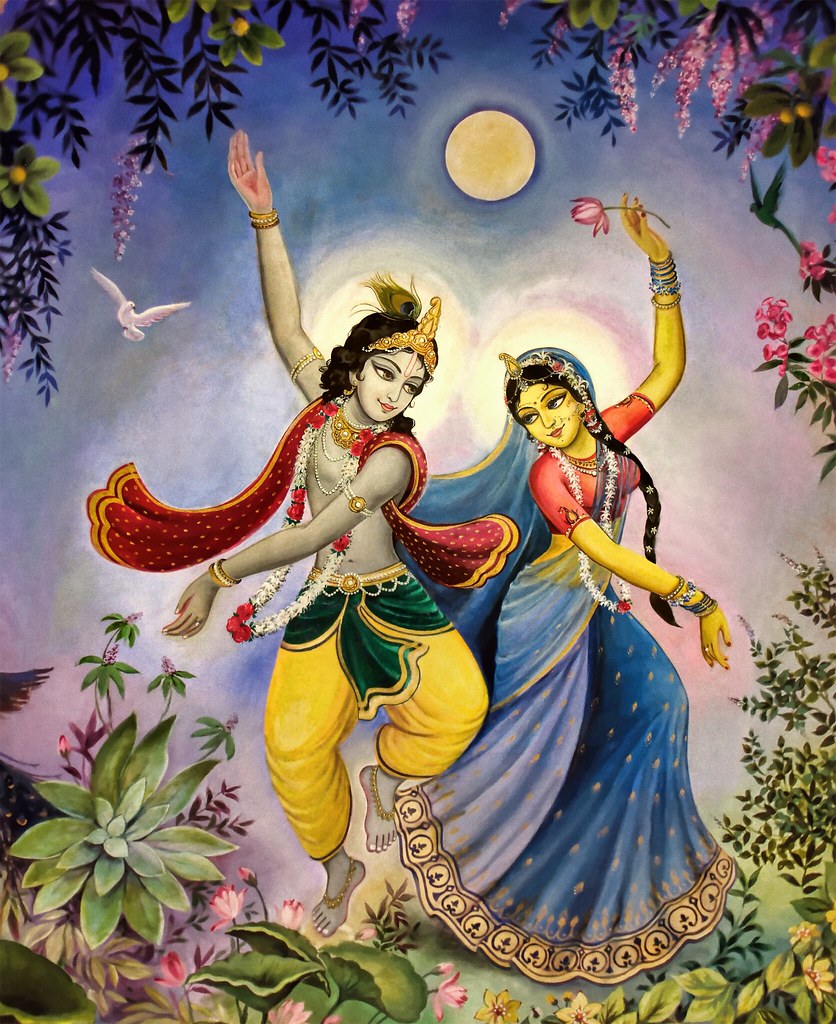Kārtika kṛṣṇa caturdaśī, meaning the 14th lunar day of the dark half of the lunar month of Kārtika, is such an important part of the year that each region and spiritual tradition has a different way of observing it. Indeed, in regions of Southern India, this is the main day of Dīpāvali (Diwali), and yet in others, it is simply “Diwali Eve”, or Choti Diwali. The themes are many – from honoring canine companionship in Kukur Tihār, through to taking care of our own bodies and looks, the festivals allow Hindus to connect to the sacredness of this time through a variety of themes, ceremonies, and stories. As a celebration of freedom and renewal, the practices associated with Naraka Caturdaśī are of a cleansing nature, and focus on self-care, inner beauty, and reflection.
Diwali Day 3: Naraka Chaturdashi & Choti Diwali
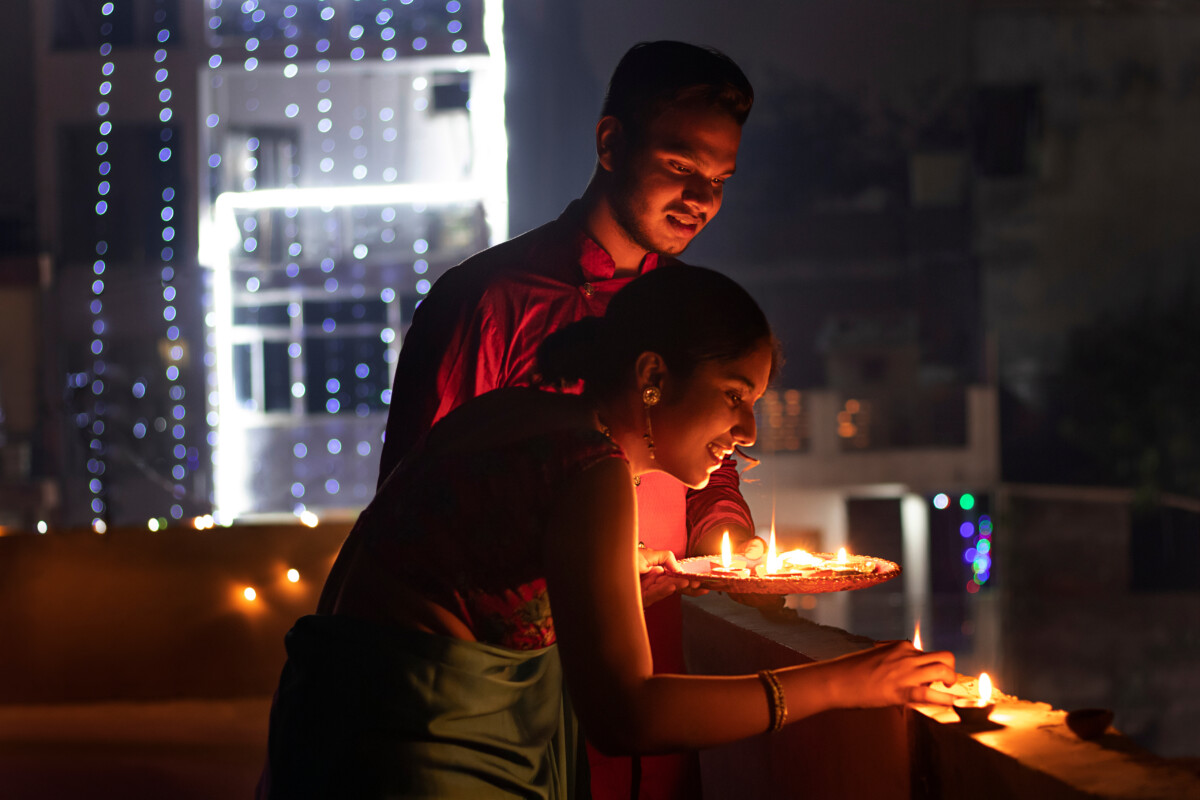
Jump to the stories of Naraka Chaturdashi
Stories & Observances
Kṛṣṇa (Krishna), Satyabhāmā, and the defeat of Narakāsura
According to the Bhāgavata Purāṇa, Viṣṇu Purāṇa, Harivaṁśa, and others, a shrewd and greedy asura (a powerful being that uses their gifts for selfish reasons at the expense of others), named Naraka, once sought a boon of indestructibility from Brahmā, the grandsire of this universe. Of course, Brahmā never awards the boon of immortality, for this is the realm of mortals. Knowing this, Naraka asked that if he must die, it should be only at the hands of his mother, Bhū Devī (Mother Earth) – something he knew would never happen. Which mother would kill their son, no matter what they did?
Relieved by the conditions of the request, Brahmā granted the boon. Narakāsura then misused his new powers to conquer the celestial realms. The devas were powerless against him; the boon of indestructibility rendered all of their powers useless. They fled as he seized 16,100 women from their homes, and even went so far as to steal the radiant earrings of Aditi, the mother of the devas, a signal that she would be powerless should Narakāsura choose to set his sights on her.
Distraught and offended, Aditi went to Krishna, knowing that Satyabhāmā was an incarnation of Bhū Devī. Narakāsura’s raids of the various kingdoms of earth and the celestial realms did not worry her as much as the forcible kidnap and assault of the 16,100 women, the abuse of deva Tvaṣṭā’s daughter, and the vile threat of assault to Aditi. Satyabhāmā resolved to never let this happen. Satyabhāmā urged Krishna to let her join him in battle against Narakāsura, knowing that she alone could actually kill her son (although some sources say it was Krishna who did). Thus resolved, Krishna and Satyabhāmā mounted the celestial eagle Garuḍa, and flew to Narakāsura’s capital in Prāgjyotiṣapura (now in modern-day Assam1).
Mura, who was the son of the Vedic seer Kaśyapa, also had a boon from Brahmā that allowed him to bring death to mortals and immortals alike on his mere touch. Mura became the general-in-command of Narakāsura, his best friend, for the battle against Krishna. Narakāsura sent Mura and a massive army to repel Krishna and Satyabhāmā, but the pair killed Mura and all the soldiers with arrows, aided by Garuḍa’s sweeping wings.
With no option left, Narakāsura entered the battlefield with elephants and horses, hurling thunderbolts. He then hurled a trident at Krishna, striking him down. Of course, nothing could really wound Krishna, but he feigned this in order to give Satyabhāmā the justification to take over the fight.
Satyabhāmā, seeing her Krishna struck down by a trident, took aim straight for Narakāsura’s heart. In an instant, Narakāsura was struck by Satyabhāmā’s powerful arrow and fell to his death, only then realizing that Satyabhāmā is an incarnation of his mother, Bhū Devī. In the Purāṇas, it is also stated that Krishna was able to dispatch Narakāsura with his mother’s consent. In any case, during his last few breaths, Narakāsura bowed his head to Krishna, admitting his terrible faults. He asked as his dying wish that on that day, every year, people should learn from his mistakes and look to cleanse themselves of greed, unbridled desire, and mistreatment of women. The 16,100 women that were held captive were freed, Aditi’s earrings returned, and Krishna and Satyabhāmā returned victorious before dawn. Bloodied from the battle, they bathed themselves with clean water, fragrant oils and sandalwood paste – a tradition that became the ceremonial Diwali oil bath2.
Kāmākhyā Devī and Narakāsura
The great thing with so many traditions is that every major event is celebrated in ways that amplify the relevance of the central themes and messages for each region and each people. So, in Assam, Madhya Pradesh, Chhatisgarh, regions filled with peoples from regional/tribal and Śākta Dharma traditions, it was Devī herself who was secretly behind the slaying of Narakāsura.
Narakāsura did indeed receive the boon from Brahmā, and he used it to conquer all earthly and celestial realms. However, he noticed that people still venerated Śrī Kāmākhyā Devī, one of the most powerful spiritual centers in Assam dedicated to the Feminine Divine. He too saw that she was the most beautiful woman in the world. In his haughtiness, obstinacy, and conceitedness, the egotistical Narakāsura thought he would take Kāmākhyā to be one of his consorts.
Kāmākhyā Devī decided to teach him a lesson, given the amount of terror he visited upon people. She said she would agree to become his consort if he could build a stone pathway up to the top of Nīlācala Hill, where her shrine is, before the cockerel crowed at dawn.
Narakāsura began the task, feverishly constructing the pathway up the hill. Yet before he could finish, he heard the sound of a cockerel crowing! Astonished that he couldn’t complete the task and ashamed to show his face, Narakāsura returned to his city. Little did he know it was Kāmākhyā Devī herself who had tricked him by asking the cockerel to crow way before dawn. However, after a while, Narakāsura couldn’t contain his anger and vowed vengeance against the cockerel. He scoured Nīlācala and chased the cockerel to kill it.
This was the final straw – that he would rush to kill an innocent living being without even ascertaining all of the facts simply because he was blinded by his emotions and seething with vengeance. Kāmākhyā Devī then engineered the battle between Krishna, Satyabhāmā, and Narakāsura leading to his demise, as recorded in the Kālikā Purāṇa.
The Ancestors and Bhūta Caturdaśī
This night is sometimes referred to as the “Hindu Halloween”, but this understanding misses the point. In fact, in regions of eastern India especially West Bengal and also Bangladesh, this festival is similar to the Día de los Muertos of Mexico and other regions of Central and South America.
Derived from bhūta meaning those which have passed, and caturdaśī meaning the 14th lunar day, Bhūta Caturdaśī is a festival honoring ancestors from 14 past generations. People from these regions hold that on this night, the boundary between the living and the dead is weaker, and these ancestors of 14 prior generations return to bless and protect their descendants. The festival also serves to ward off wandering, distraught spirits who are thought to be more active at this time.
Predating Diwali in West Bengal and Bangladesh, Bhūta Caturdaśī focuses more on protection and remembrance, contrasting with Diwali’s emphasis on prosperity. Families light 14 dīpams and place them around the home – especially in dark corners and entrances – to welcome the ancestors and guard against negative energy. Each dīpam represents a generation, creating a protective barrier against darkness and chaos. Another tradition is eating 14 varieties of leafy greens called choudosho shaak, believed to remove impurities and promote healing. Bhūta Caturdaśī reminds us of life’s cyclical nature and the enduring emotional, historical, and spiritual bonds between the living and those who have gone before3.
Rūpa Caturdaśī
In regions of western India, this day begins with acknowledging that external beauty is not about features beyond our control and social conventions deciding on what is considered beautiful. Rather, it is that taking care of one’s body, and feeling good internally is the key to the radiant aura that transcends the fads of fashion, beauty, and expectations.
The ceremony is pretty straightforward – in the morning, after one’s bath, a practitioner would take the time to care for one’s skin, face, hair, nails, teeth, lips, etc. They would use pure, organic oils and balms prepared according to Āyurvedic/Uzhicil or other traditional medicine teachings. Once ready, a person dresses up using clothes made from natural, sustainable fibers and ethically sourced jewellery. Finally, a person reviews their look in a mirror before preparing for the festivities of the evening.
This seems a tad materialistic? Not at all. Throughout the process, the person is asked to truly reflect – like they did with the mirror – on the fact that they are lucky enough to have a body that functions. Whether it does so well or not is of secondary importance; its primary importance is as the vehicle for life. Our life. Our ability to achieve what we want in this life. Whereas we may neglect it sometimes, not paying attention to what we consume, exercise, and other healthy practices such as meditation, this day reminds us to pay attention. Rūpa Caturdaśī also asks us to reflect on what we consider true beauty. Is it that social beauty standard, or is it holistic wellbeing, the kind that produces an aura of confidence, humility, contentedness, compassion, and spirituality?
Hanumān Jayanti… Again?
Funnily enough, there are actually five different dates for the appearance day of Hanumān, the devotee of Śrī Rāma and expansion of Śiva (Shiva), every year. This is because each region of Ancient India emphasised a specific form of Hanumān, each of which was tied to a different season.
Añjanā was an apsarā, a celestial lady, who had assumed the form of a vānara (a legendary race of ape-like beings of human-level intelligence) on earth. She and her husband Kesarī were great devotees of Shiva, and deeply wished for a child whom they could shower love upon. Añjanā engaged in severe spiritual practices to call upon Shiva. Being pleased, Shiva blessed her, saying that he would be born in her womb in the form of a powerful and brave warrior.
At the same time, King Daśaratha of Ayodhyā was performing fire ceremonies to obtain heirs to his kingdom. As the ceremonies culminated, Agni, who is the personification of fire himself, appeared, carrying with him a bowl of pāyasam, or sweet rice, to be distributed among Daśaratha’s queens, which would lead to the birth of princes Rāma, Lakṣmaṇa, Bharata and Śatrughna.
Because Añjanā and Kesarī, too, had wished for the same thing at the same time, Shiva ordered Vāyu, the guardian of wind and air, to take a little bit of the pāyasam and deliver it to Añjanā. Upon consuming it, she conceived her powerful and loving son, Sundara, born on Añjanādri Hill, as the son of Añjanā and Kesarī, but is also imbued with the powers of Shiva and is blessed by Vāyu which is why he is sometimes referred to as the son of Kesarī, but also of Shiva and Vāyu as well5. He would later become known as Hanumān. He remains to this day a manifestation of strength, devotion, quick wit, cleverness, empathy, and collaboration, qualities that define his crucial role in the epic Rāmāyaṇa, and as an immortal who inspires humans to reach their full potential.

Kukur Tihār – Nepal’s Dog Diwālī
The word kukura means dog in Nepali, and this day is dedicated to honoring dogs for their loyalty, companionship, and protective qualities. In Hindu traditions, dogs are considered sacred animals and are closely associated with Bhairava and Yama, the guardian of death, serving as his messengers.
Long ago, Yama sent dogs as his messengers to protect humans. People who treated the dogs kindly were believed to receive Yama’s blessings, ensuring safety and long life. Another folk story tells of a sage whose dog protected him from thieves, showing bravery and devotion – reflecting a common experience for humans throughout history, as well as dogs’ abilities to save lives or alert families to danger, proving their intelligence and loyalty6. During Kukur Tihār, dogs are welcomed into homes or gathered in public spaces, where they are adorned with flower garlands, vermillion marks of honor on their forehead, and offered special foods like meat, milk, and sweets7. Mantras are recited, and ceremonies are performed to express gratitude and respect. Both pet dogs and community dogs participate in this ceremony. Kukur Tihār emphasizes respect for animals and the symbiotic bond between humans and their animal companions.
Kālī Caudas: Kālī Mā and The Clone War
Celebrated in some tribes/clans/communities across ancient India and the diasporas, Kālī Caudas focuses on the victory of the Supreme Feminine against the bloodthirsty, egomaniacal tyrants who sought world domination.
In one famous war, Raktabīja, or Blood Seed, was an asura general who had the power to clone himself – any drop of his blood that fell on the earth would result in an exact clone of him. Because of this, the devīs could not find a way to defeat him – every time he was cut down, hundreds more of him would spring up in his place, multiplying his ferocity.
The Supreme Feminine Śakti (Shakti) was enraged at his tactics, and appeared in a newer form, matching his ferocity, dark with anger – so angry in fact that she did not care for clothes or tying her hair up to prevent snagging. With one sole desire to protect the world, she lunged at him with a tongue outstretched, catching every drop of his blood before it could hit the earth, and in this way she was able to defeat Raktabīja.
To commemorate this victory of the Supreme Feminine against the base instinct to dominate at the expense of others, Hindus from these regions and traditions honor Kālī Mā with ceremonies of gratitude late in the night of Kālī Caudas.
Yamadīpam
Though many people would have done Yamadīpam on the day before, some regions and traditions honor this night with a dīpam dedicated to Yama placed in the southern part of their homes, acknowledging the sacredness of this period of the year for reflections on the meaning of life.
1 https://assam.pscnotes.com/assam-history-and-culture/pragjyotisha-and-kamarupa-kingdoms/#:~:text=According%20to%20ancient%20texts%20like,associated%20with%20the%20demon%20Narakasura
2 https://www.newindianexpress.com/amp/story/cities/bengaluru/2012/nov/09/narakasura-diwali-story-423942.html
3 https://www.ndtv.com/offbeat/diwali-2024-diwali-traditions-bhoot-chaturdashi-all-about-west-bengals-version-of-halloween-6900488
4 https://vocal.media/history/hanumath-jayanti-story-behind-the-birth-of-shri-hanuman
5 Vālmīki’s Rāmāyaṇa, 66.24-25
6 https://himalayan-masters.com/nepal-dog-festival/
7 https://accessnepaltour.com/dog-festival-in-nepal/




